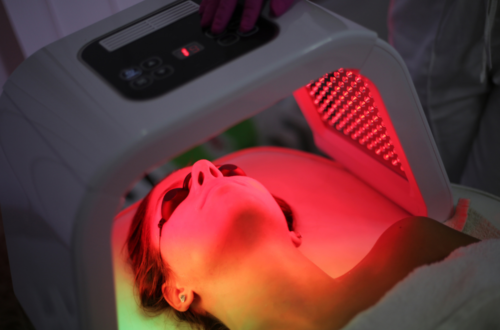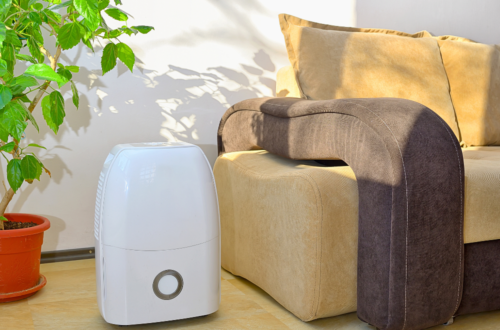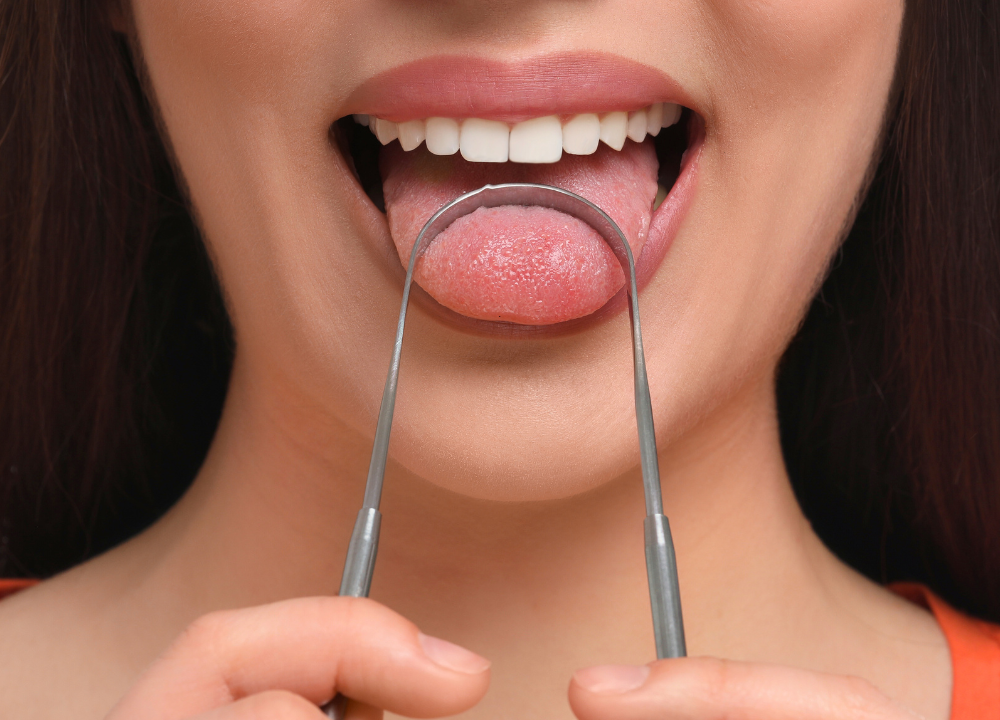
Tongue Scraper: Should You Use It Before or After Brushing?
A tongue scraper can significantly enhance your oral health routine. It removes bacteria, food particles, and dead cells from the surface of your tongue. Many people experience fresher breath and a cleaner mouth after using a tongue scraper.
Consistent use of a tongue scraper can also improve your taste sensation by clearing away debris that dulls taste buds.
Table of Contents
What Is A Tongue Scraper?
Ever wondered about the best way to keep your mouth fresh and clean? Have you heard about tongue scrapers? These handy tools can make a big difference in your oral hygiene routine.
Purpose And Benefits Of Using A Tongue Scraper
A tongue scraper is a simple tool designed to help clean the surface of your tongue. This can remove bacteria, food particles, and dead cells. The main purpose of using a tongue scraper is to improve oral hygiene and freshen your breath.
Here are some key benefits:
- Reduces bad breath: By removing bacteria and debris, your breath stays fresher longer.
- Improves taste: Cleaning your tongue can enhance your taste buds, making food taste better.
- Prevents oral health issues: Regular scraping can help prevent plaque buildup and gum disease.
To understand these benefits better, let’s look at them in detail:
| Benefit | Explanation |
|---|---|
| Reduces bad breath | Removes bacteria and particles that cause odor. |
| Improves taste | Clears debris from taste buds, enhancing flavor perception. |
| Prevents oral health issues | Helps reduce the risk of plaque and gum disease. |
How Tongue Scraping Improves Oral Hygiene
Tongue scraping can significantly improve your oral hygiene. It helps to remove the film that builds up on your tongue. This film is home to bacteria and can lead to bad breath and other oral health problems.
Using a tongue scraper can:
- Reduce bacteria: Regular scraping removes harmful bacteria from your mouth.
- Prevent plaque: Less bacteria means less chance of plaque forming on your teeth.
- Enhance oral cleanliness: Scraping your tongue completes your oral hygiene routine.
Here’s how it works:
- Step 1: Hold the scraper at both ends and place it at the back of your tongue.
- Step 2: Gently pull it forward, scraping the surface of your tongue.
- Step 3: Rinse the scraper and repeat until your tongue feels clean.
Regular tongue scraping can lead to a healthier mouth and a brighter smile. Incorporating this simple tool into your daily routine can make a big difference.
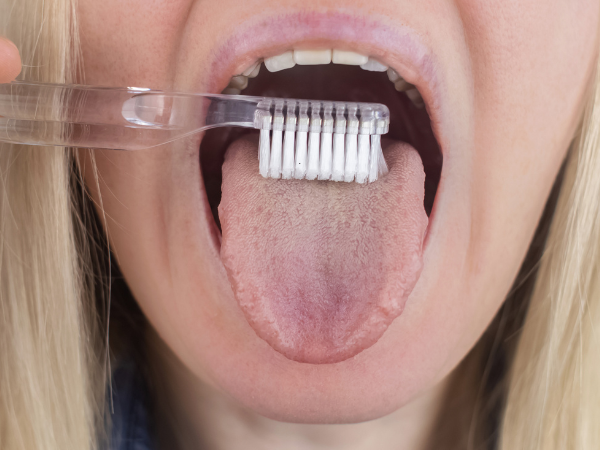
Should You Use A Tongue Scraper Before Or After Brushing?
Using a tongue scraper can greatly improve your oral hygiene. The big question is: should you use it before or after brushing? Let’s explore which method works best for you.
Tongue Scraping Before Brushing: The Pros And Cons
Many people prefer to scrape their tongues before brushing. This method has several advantages.
- Pros:
- Removes Residue: Scraping first removes food particles and bacteria, allowing your toothbrush to focus on cleaning your teeth.
- Fresher Breath: Eliminating debris before brushing can result in fresher breath.
- Improves Taste: Clearing your tongue can enhance your taste buds.
However, there are also downsides to consider.
- Cons:
- Extra Step: Adding tongue scraping before brushing can make your routine longer.
- Gag Reflex: Scraping before brushing might trigger your gag reflex.
For some, the benefits of scraping first outweigh the cons. For others, it may feel like an unnecessary addition to their routine.
Tongue Scraping After Brushing: The Pros And Cons
Scraping your tongue after brushing is another popular method. This approach has its own set of benefits.
- Pros:
- Complete Clean: Brushing first removes most of the debris, making tongue scraping more effective.
- Fresher Mouth: Scraping last can leave your mouth feeling fresher.
- Saves Time: Combining scraping with the final rinse can save time.
There are some downsides to this method as well.
- Cons:
- Overlooked Step: You might forget to scrape your tongue after brushing.
- Less Effective: If your brushing technique is not thorough, some debris might remain.
Choosing to scrape your tongue after brushing can work well for those seeking a comprehensive clean without adding extra steps.
MasterMedi Tongue Scraper
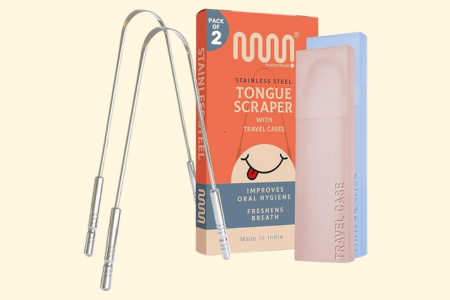
Duration For Scraping Your Tongue
In this section, we’ll dive into the optimal duration for scraping your tongue.
How Long Should You Scrape Your Tongue?
The duration for scraping your tongue is crucial for achieving the best results. Experts recommend scraping for about 10-15 seconds. This short duration ensures you effectively remove bacteria without causing any harm to your tongue.
Here are some key points to consider:
- Do not rush; take your time to cover the entire surface of your tongue.
- Gentle pressure is sufficient to remove most debris and bacteria.
- Repeat the process 2-3 times during each session for optimal cleanliness.
For those who prefer a more structured approach, refer to the table below:
| Step | Action | Duration |
|---|---|---|
| 1 | Place the scraper at the back of your tongue. | 2-3 seconds |
| 2 | Gently pull the scraper forward. | 2-3 seconds |
| 3 | Rinse the scraper and repeat. | 4-5 seconds |
Tips For A Proper Tongue Scraping Routine
To get the most out of your tongue scraping routine, follow these tips:
- Scrape your tongue daily. Morning is the best time to do this to remove overnight buildup.
- Hydrate before scraping. Drinking a glass of water can help loosen debris.
- Use a proper technique. Place the scraper at the back of your tongue and pull it forward.
- Rinse the scraper after each stroke. This prevents reintroducing bacteria into your mouth.
Maintaining a consistent routine is important. Here’s a simple guide:
- Start at the back of your tongue.
- Gently pull the scraper forward.
- Rinse the scraper and repeat.
- Finish by rinsing your mouth with water.
Which Side Of Tongue Scraper To Use
Choosing the right side of the tongue scraper can enhance your cleaning routine. Most tongue scrapers have two sides: a ridged side and a smooth side.
- Ridged Side: Best for initial scraping to remove heavy buildup.
- Smooth Side: Ideal for a final pass to ensure a clean finish.
Here’s a breakdown:
| Side | Purpose | When to Use |
|---|---|---|
| Ridged Side | Remove heavy debris | First pass |
| Smooth Side | Polish and finish | Final pass |
For the best results, start with the ridged side to tackle major debris. Then, switch to the smooth side to ensure a polished, clean tongue. Regularly clean your scraper to maintain hygiene and effectiveness.
The Ideal Tongue Cleaning Routine
To achieve the best results, let’s explore the ideal tongue cleaning routine. A well-planned routine ensures fresh breath, reduces bacteria, and promotes overall oral health.
Combining Tongue Scraping With Brushing And Flossing
Tongue scraping should be an integral part of your daily oral care regimen. It effectively removes bacteria, dead cells, and food particles from the surface of the tongue. For optimal results, follow these steps:
- Step 1: Flossing – Start with flossing to remove food particles and plaque between teeth.
- Step 2: Brushing – Brush your teeth thoroughly for at least two minutes.
- Step 3: Tongue Scraping – Gently scrape your tongue from the back to the front. Rinse the scraper after each pass.
- Step 4: Rinsing – Finish by rinsing your mouth with water or mouthwash to eliminate loosened debris.
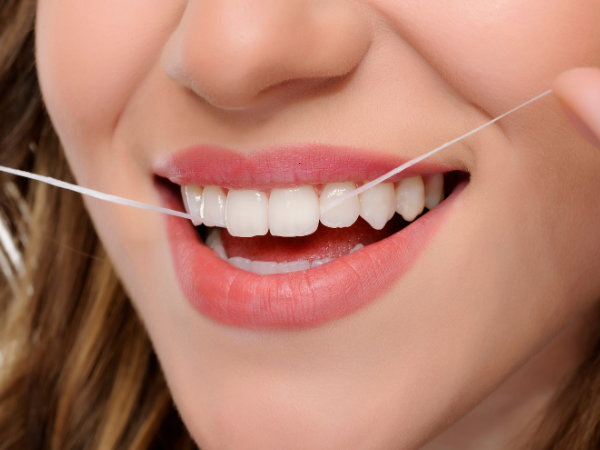
Additional Tools For Enhancing Oral Hygiene
Incorporating additional tools can elevate your oral hygiene routine. Here are some recommended tools:
- Electric Toothbrush – Provides more effective cleaning compared to manual brushing.
- Water Flosser – Uses water pressure to clean between teeth and along the gumline.
- Antimicrobial Mouthwash – Reduces bacteria and freshens breath.
- Interdental Brushes – Cleans between teeth where regular brushes can’t reach.
Consider this comprehensive checklist to ensure you have all the necessary tools:
- Manual or Electric Toothbrush
- Floss or Water Flosser
- Tongue Scraper
- Antimicrobial Mouthwash
- Interdental Brushes
Using these tools together helps create a robust oral hygiene routine. Consistency is key for maintaining a healthy mouth. Your tongue, teeth, and gums will thank you!
Is Tongue Scraping Necessary For Everyone?
Many wonder if tongue scraping is necessary for everyone. Let’s explore who benefits most from tongue scraping and when it might not be recommended.
Who Can Benefit Most From Tongue Scraping
Tongue scraping helps remove bacteria, food particles, and dead cells from the tongue’s surface. People who benefit the most include:
- Individuals with bad breath: Tongue scraping reduces bacteria that cause bad breath.
- Smokers: Smoking leaves residues on the tongue, which scraping can remove.
- People with dry mouth: Lack of saliva can cause bacteria build-up, and tongue scraping helps.
- Those with a coated tongue: A white or yellow coating indicates bacteria or debris, which scraping can eliminate.
Benefits of tongue scraping:
| Benefit | Description |
|---|---|
| Improved Taste | Removes debris that blocks taste buds. |
| Better Oral Hygiene | Reduces bacteria and plaque build-up. |
| Fresher Breath | Eliminates odor-causing bacteria. |
Incorporating tongue scraping into your daily routine can significantly improve oral health and hygiene.
When Tongue Scraping Might Not Be Recommended
Tongue scraping might not be suitable for everyone. Consider avoiding it if you have:
- Open sores or cuts on your tongue: Scraping can cause pain and further irritation.
- Mouth ulcers: It can aggravate the condition and delay healing.
- Sensitive gag reflex: Scraping might trigger discomfort or nausea.
- Infections: Bacterial or fungal infections could worsen with scraping.
Conditions where tongue scraping is unnecessary:
| Condition | Reason |
|---|---|
| Healthy Tongue | No visible coating or bad breath. |
| Excellent Oral Hygiene | Regular brushing and flossing may suffice. |
| Regular Dental Visits | Dentists can clean your tongue effectively. |
Consult a dental professional if unsure about incorporating tongue scraping into your routine.
Recommended Frequency For Changing Your Tongue Scraper
Regular replacement is crucial for maintaining its effectiveness and ensuring your mouth stays clean and healthy.
Signs It’s Time To Replace Your Tongue Scraper
Knowing when to replace your tongue scraper is essential. Here are some signs:
- Visible wear and tear: Cracks, bends, or any deformations mean it’s time to get a new one.
- Discoloration: If the scraper changes color, it might be harboring bacteria.
- Odor: A persistent bad smell indicates that it’s no longer hygienic.
- Loss of effectiveness: If it’s not cleaning your tongue as well as it used to, replace it.
Typically, you should replace your tongue scraper every three to four months. This frequency ensures it remains effective and safe to use.
| Material | Replacement Frequency |
|---|---|
| Plastic | 3 months |
| Metal | 4 months |
How To Properly Store Your Tongue Scraper
Proper storage of your tongue scraper is vital for maintaining its hygiene and longevity. Follow these tips:
- Rinse thoroughly: After each use, rinse your tongue scraper with warm water to remove any residue.
- Dry completely: Use a clean towel to dry it, or let it air dry. Avoid storing it while wet.
- Store in a clean area: Keep it in a clean, dry place away from the toilet and sink.
- Use a case: Consider storing it in a dedicated case to prevent contamination.
A clean and dry tongue scraper is less likely to harbor bacteria, ensuring it remains effective and safe for use. Regular cleaning and proper storage will extend its life and maintain your oral hygiene.
Metal Vs. Plastic Tongue Scrapers: Which Is Better? Pros And Cons
When considering whether to use a tongue scraper before or after brushing, many also wonder which type of scraper is best: metal or plastic? Each has its own advantages and drawbacks.
The Benefits And Drawbacks Of Metal Tongue Scrapers
Metal tongue scrapers are popular for their durability and effectiveness. They are usually made from stainless steel or copper, which can last for years if maintained properly. Here are some key points to consider:
- Durability: Metal scrapers can last a long time without needing replacement.
- Effectiveness: They provide a more thorough clean, removing more bacteria and debris.
- Easy to Clean: Metal scrapers can be easily sanitized, ensuring they remain hygienic.
- Eco-Friendly: Since they last longer, they are more environmentally friendly.
On the downside, metal tongue scrapers can be uncomfortable for some people due to their rigid structure. They might feel harsh on sensitive tongues. Additionally, metal scrapers can be more expensive upfront. Here’s a quick comparison table to summarize:
| Pros | Cons |
|---|---|
| Durable | Uncomfortable for sensitive tongues |
| Effective cleaning | Higher initial cost |
| Easy to sanitize | Rigid structure |
| Eco-friendly |
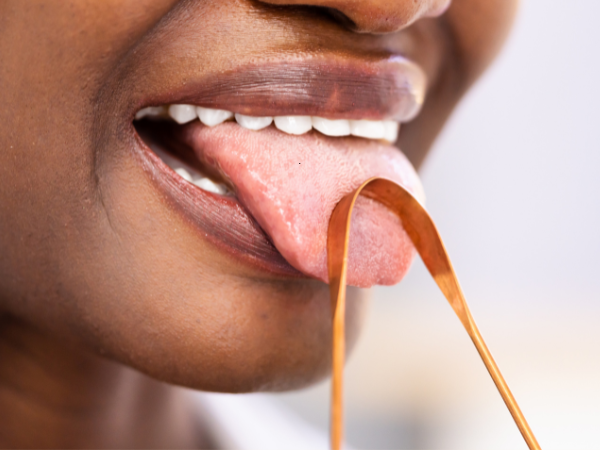
Pros And Cons Of Plastic Tongue Scrapers
Plastic tongue scrapers are known for their flexibility and affordability. They are often made from BPA-free plastic, making them safe for daily use. Here are some benefits:
- Affordable: Plastic scrapers are cheaper, making them accessible to everyone.
- Flexible: They are gentler on the tongue, which is good for people with sensitive tongues.
- Lightweight: Easy to carry, they are perfect for travel.
- Variety: Available in different colors and designs to suit personal preferences.
The drawbacks of plastic tongue scrapers include their shorter lifespan and environmental impact. They need to be replaced more frequently, leading to more plastic waste. They also may not clean as thoroughly as metal scrapers. Here’s a summary table:
| Pros | Cons |
|---|---|
| Affordable | Shorter lifespan |
| Gentle on the tongue | Less effective cleaning |
| Lightweight | Environmental impact |
| Variety in design |
Copper Vs. Stainless Steel Tongue Scrapers: Which Is Better? Pros And Cons
Another debate involves the material of the tongue scraper itself: Copper vs. Stainless Steel Tongue Scrapers. This post dives into these aspects to help you make an informed choice.
Benefits Of Copper Tongue Scrapers
Copper tongue scrapers offer numerous advantages. Copper is naturally antimicrobial, which means it can kill bacteria and other pathogens on contact. This property makes it an excellent choice for oral hygiene.
Here are some key benefits of using a copper tongue scraper:
- Antimicrobial Properties: Copper kills harmful bacteria, reducing the risk of oral infections.
- Durability: Copper is a long-lasting material that doesn’t easily wear out.
- Eco-Friendly: Copper is recyclable, making it an environmentally friendly option.
- Traditional Use: Copper has been used for centuries in Ayurvedic practices for its health benefits.
Below is a table highlighting the pros and cons of copper tongue scrapers:
| Pros | Cons |
|---|---|
| Antimicrobial | Can tarnish over time |
| Durable | May require regular cleaning |
| Eco-friendly | More expensive than plastic options |
| Traditional use | Heavier than stainless steel |
Advantages Of Stainless Steel Tongue Scrapers
Stainless steel tongue scrapers are also popular for good reasons. Stainless steel is highly durable and resistant to rust, making it a reliable choice.
Here are some benefits of using a stainless steel tongue scraper:
- Rust-Resistant: Stainless steel doesn’t rust, ensuring longevity.
- Easy to Clean: This material is straightforward to sanitize and maintain.
- Lightweight: Stainless steel scrapers are often lighter than their copper counterparts.
- Cost-Effective: Generally, stainless steel scrapers are more affordable than copper ones.
Below is a table comparing the pros and cons of stainless steel tongue scrapers:
| Pros | Cons |
|---|---|
| Rust-resistant | Not antimicrobial |
| Easy to clean | May feel colder to touch |
| Lightweight | Less traditional |
| Cost-effective | Less eco-friendly |
How to disinfect a tongue scraper?
Rinse the tongue scraper with warm water after each use. For deeper cleaning, soak it in a solution of water and mouthwash or use soap and water, then allow it to air dry.
What to do if you don’t have a tongue scraper?
You can use a toothbrush or the edge of a spoon to gently clean your tongue, scraping from back to front to remove buildup.
What to look for in a tongue scraper?
Choose a tongue scraper made of stainless steel or copper for durability and easy cleaning. Look for an ergonomic design that feels comfortable in your hand and is easy to use.


